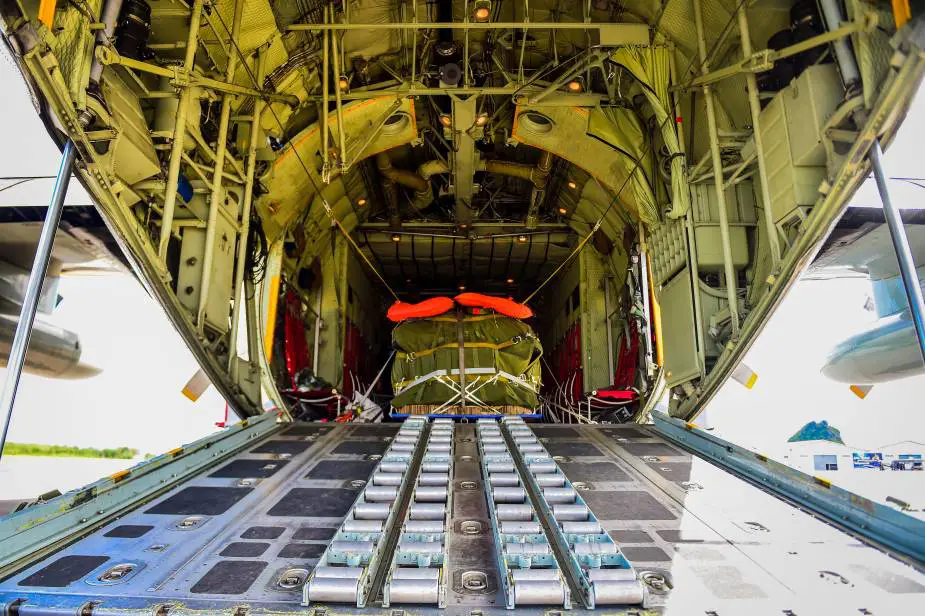The European Defence Agency (EDA) will support two Permanent Structured Cooperation (PESCO) projects focused on shaping future European airlift capabilities, for both mid-sized and out-sized cargo, following a request from their project coordinators.
Follow Air Recognition on Google News at this link
 Tactical cargo aircraft are the workhorses of the air forces in terms of logistics, medical evacuations, and special missions (Picture source: EDA)
Tactical cargo aircraft are the workhorses of the air forces in terms of logistics, medical evacuations, and special missions (Picture source: EDA)
EDA is tasked to assist with the harmonisation of the requirements for two platforms; the Future Medium-Size Tactical Cargo (FMTC) and the Strategic Air Transport For Outsized Cargo (SATOC). Both projects were launched in the fourth wave of PESCO projects and are coordinated by France and Germany, respectively; with the FMTC also gathering Germany, Spain and Sweden as project members and Czechia, France and Netherlands in the four-nation SATOC project.
Medium & Outsized Cargo: Requirements for 2035+
Tactical cargo aircraft are the workhorses of the air forces in terms of logistics, medical evacuations, and special missions. Currently, EU Member States operate a wide range of tactical cargo aircraft (e.g. C-130, C-295, C-27J). Apart from the A400M, a modern strategic-tactical cross-over platform, many of them will be approaching the end of their life cycle in the upcoming decade. The main objective of the FMTC project is to develop the next-generation tactical air mobility capability of the armed forces of EU Member States. It aims at providing the participating Member States and industry with robust elements to decide what the 2035+ future of EU military tactical medium-size transport fleets will be by defining common requirements for a new Future Mid-size Tactical Cargo.
SATOC aims to fill the critical shortfall for strategic transport for outsized and heavy cargo, a crucial enabler for military missions and operations. SATOC involves a 3-step approach, firstly by identifying a sufficient number of project members, harmonising requirements and finally identifying and agreeing on a common European solution for the transport of outsized cargo. Russia’s war of aggression against Ukraine has also underscored the importance of outsized and heavy cargo transport. The destruction of several Antonov aircraft, including AN-225 Mriya (the world’s largest cargo aircraft) has further reduced the European Armed Forces' access to strategic airlift.
EDA’s support to FMTC and SATOC, which will run for an initial 24 months, will be dedicated to harmonising the requirements of the project members and drafting a joint document of precise common guidance for research and development for the envisioned platform.
Common requirements for a common vision
Defining common requirements is an essential step in order to allow project members to align towards a joint vision for the future medium-sized and outsized cargo aircraft. In other words, common requirement articulation can be seen as the basis that all subsequent decisions in the ensuing programme will reference. They prescribe the fundamental performance criteria and innovation level of the platform that is destined to be a crucial element in future military campaigns of Member States. Furthermore, it will serve as a basis for the work of the European defence industry, starting with a feasibility study and proceeding with the design and prototyping of the new generation aircraft.
Harmonised requirements lower the life-cycle cost by avoiding late design changes and excessive versioning, and prevent fragmentation of future air mobility fleets at large by allowing for a platform development that serves an array of Member States. EDA will provide its expertise and input for the elaboration of the requirements, building on its experience in harmonisation of project partners.
EDA engages in the document drafting process by highlighting areas that connect to ongoing efforts in related fields, such as defence aviation R&T, providing its experience in interoperability matters of tactical airlift, and supporting the discussion with best practices in achieving a programme that maximises Member States participation.
EDA supporting 10 PESCO projects
FMTC and SATOC are the 9th and 10th PESCO project to be supported by the Agency. PESCO, which recently marked five years since its launch, has also be able to benefit from the expertise of the EDA. EDA’s support has grown from initial modest administrative support to a couple of PESCO’s smaller-scale projects, but has since grown to include major weapons platforms, such as the FMTC and European Patrol Corvette.
EDA offers three forms of support to PESCO projects, first is administrative support by helping a PESCO project to organise meetings and providing facilities for project-related work. The second form of PESCO support is consultancy and expertise as in the case of the FMTC. Here the Agency and the PESCO project agree on the specific tasks EDA will carry out for a project. This could entail support in capturing the detailed operational and technical requirements, as well as developing its ConOps (concept of operations) by a certain deadline or defining specifications for its technical study.
The final form of EDA support is when participating members of a PESCO project choose to establish their project at the Agency, which means other Member States can choose to opt into, or join, the endeavour at a later stage, with EDA serving as project manager. To date, three PESCO projects are being taken forward within the Agency; CBRN Surveillance as a Service (CBRN SaaS); Deployable Modular Underwater Intervention Capability Package (DIVEPACK); and European Patrol Corvette.
EDA's role
The European Defence Agency (EDA) supports its 26 Member States in improving their defence capabilities through European cooperation. Acting as an enabler and facilitator for Ministries of Defence willing to engage in collaborative capability projects, the Agency has become the ‘hub’ for European defence cooperation with expertise and networks allowing it to the whole spectrum of defence capabilities.
















